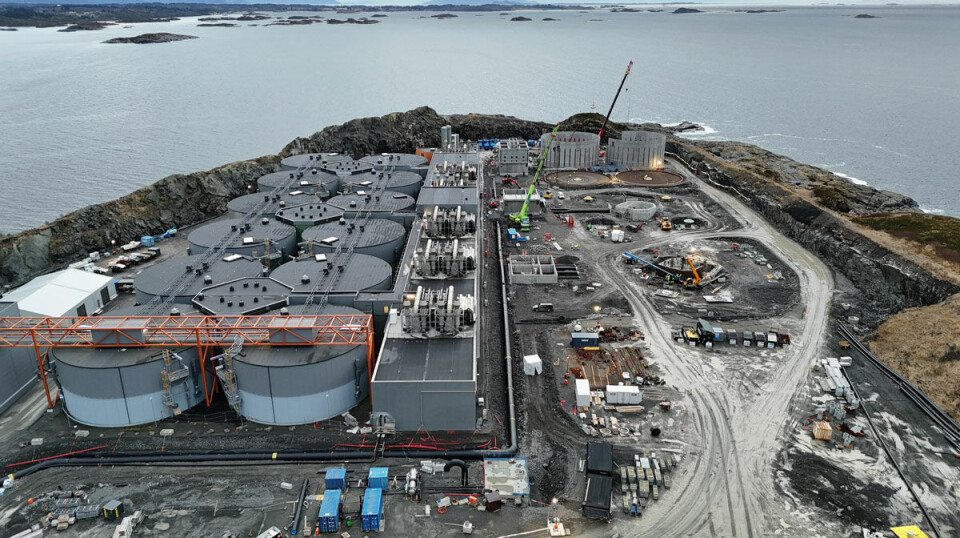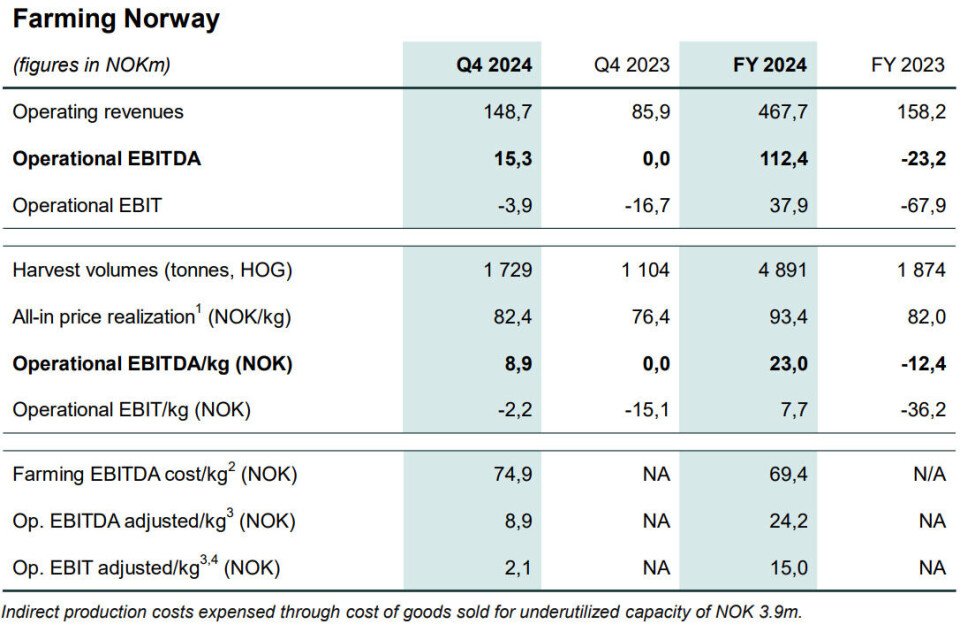
Salmon Evolution produced a third of all land-based salmon harvested last year
It was a year of strong growth and operating profit.
The company delivered a strong fourth quarter with 1,729 tons (head on gutted) and an EBITDA (earnings before interest, tax, depreciation and amortisation) of NOK 8.9 (£0.64) per kilo. The survival rate for batch 9, which was harvested in the quarter, was 97.4%, with an average harvest weight of 4.0 kg HOG.
For the entire 2024, Salmon Evolution harvested a total of 4,891 tonnes HOG, up from 1,874 tonnes last year. This is estimated to be about 30% of all land-based salmon harvested in 2024. The superior share in 2024 was 96%.
Guidance for 2025 is 6,000-6,500 tonnes, including sales of live post-smolts to net-pen salmon farmers.
Operational EBITDA for 2024 was NOK 71.4 million (2023: NOK -84.0), while EBIT after depreciation was NOK -4.7m (NOK -131m).
EBITDA/kg for the whole year was 23 NOK/kg.
The annual result ended at NOK -47 million (NOK -146).
In Q4, Salmon Evolution generated revenues of NOK 149.5m, resulting in a group EBITDA of NOK 9.2 million and a farming EBITDA of NOK 15.3m.

"We are very pleased to end 2024 with a new slaughter record and strong key figures, which underline the significant milestones we have achieved over the past 12 months," said Salmon Evolution chief executive Trond Håkon Schaug-Pettersen in a stock exchange announcement.
"2024 has further strengthened our position as the leading land-based salmon farmer globally."
The company writes that during Q4 the positive growth trend continued, supported by stable operations at its land-based farm on the island of Indre Harøy and at its hatchery at Dale.
Biomass growth in Q4 ended at 1,518 tonnes live weight, the second highest on record and up 11% from the previous quarter.
Strong momentum
"We are entering 2025 with a fully utilised facility and a positive trend, which gives us strong growth momentum going forward," said Schaug-Pettersen.
During the quarter, there was also solid progress in the development of phase 2 at Indre Harøy, and the project is on track for the first smolt release in the first quarter of 2026. Phase 2 will increase production capacity from 7,900 tonnes HOG to 18,000 tonnes.
"We are following the plan and budget, and are very satisfied with the progress at the construction site," said Schaug-Pettersen. "When phase 2 is operational, we will have an operational strength that few in the industry can match."




















